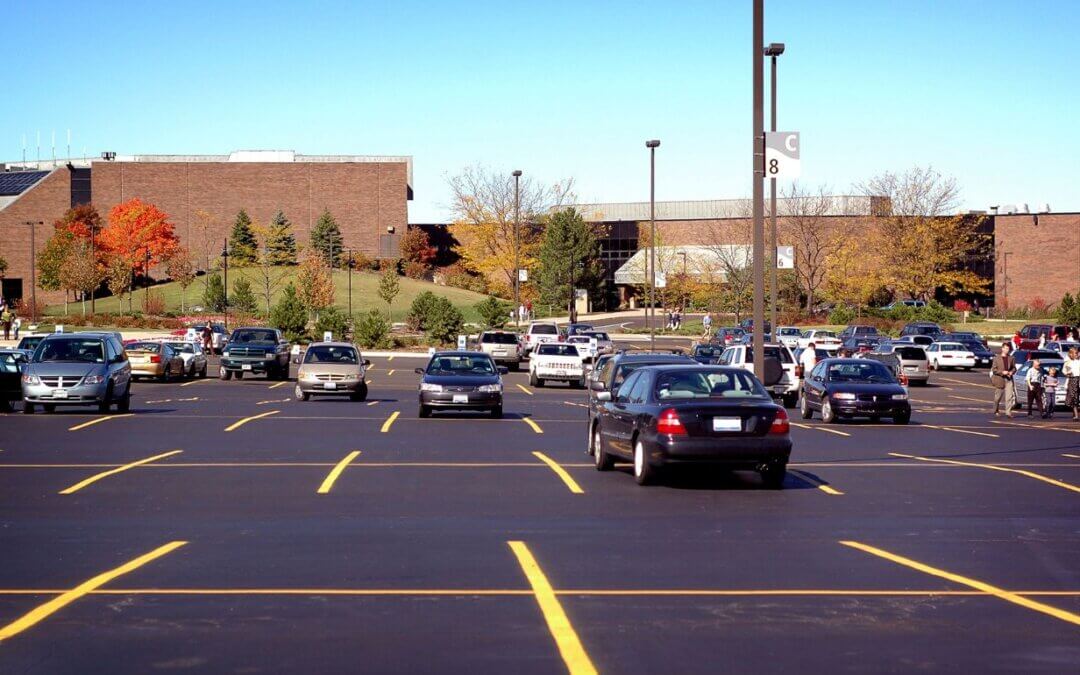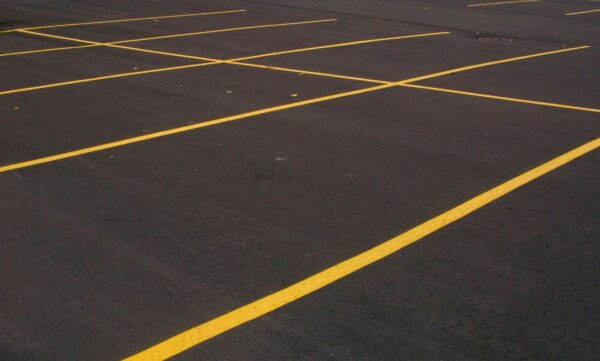Understanding the Importance of Sealcoating
Sealcoating Parking Lot is a critical aspect and that should not be overlooked. It involves applying a protective layer over the asphalt surface to enhance its durability and longevity. By creating a barrier against harmful elements such as UV rays, heavy traffic, oil spills, and harsh weather conditions, sealcoating plays a vital role in preserving the integrity of your parking lot.
One of the primary benefits of sealcoating is the prevention of asphalt deterioration. Over time, the constant exposure to sunlight and moisture can cause the asphalt to degrade, leading to cracks, potholes, and overall deterioration. The sealcoating process fills in small cracks and seals the surface, preventing water from seeping into the underlying layers and causing further damage. This not only extends the lifespan of your parking lot but also reduces the need for costly repairs and potential liabilities associated with accidents caused by damaged pavement.
The Benefits of Sealcoating Parking Lot
Sealcoating Parking Lot is a crucial maintenance activity, providing a plethora of advantages for your lot. It predominantly safeguards the pavement from harsh weather and consistent use. Sealcoating introduces a protective barrier atop the surface, defending against UV rays, water, and substances like oil and gasoline, thereby averting early wear like cracks and potholes and elongating your parking lot’s longevity.
Moreover, the aesthetic appeal of your parking area is significantly enhanced by Sealcoating Parking Lot. Asphalt can appear faded and tired over time, potentially leaving a less-than-ideal impression on visitors. Sealcoating revives the deep, dark hue of the asphalt, presenting a refreshed and attractive appearance. It also manages to conceal small cracks and smoothens minor blemishes, leading not just to improved aesthetics but also facilitating a smoother, safer parking experience for all.
Determining the Right Time In Sealcoating Parking Lot
Determining the right time to sealcoat your parking lot is crucial for its long-term maintenance. Sealcoating helps protect the surface from the damaging effects of weather, UV rays, and wear and tear caused by traffic. While there is no hard and fast rule for when to sealcoat your parking lot, there are some indicators that can help you determine the right time.
One key consideration is the age of your parking lot. As asphalt surfaces age, they become more susceptible to cracking and deterioration. If your parking lot is more than three years old or shows signs of fading, cracking, or roughness, it may be time to sealcoat. Additionally, if you notice the appearance of small cracks or the formation of potholes, sealcoating can help prevent further damage and extend the life of your parking lot.
Preparing Your Parking Lot for Sealcoating
Before sealcoating your parking lot, it is essential to properly prepare the surface to ensure the best results. The first step in the preparation process is to thoroughly clean the parking lot. This involves removing any dirt, debris, oil stains, and vegetation that may be present on the surface. Power washing the area or using a commercial cleaner can be effective in getting rid of stubborn stains. Additionally, it is important to repair any cracks or potholes in the pavement before sealcoating. This will help prevent further damage and ensure a smooth and even surface for the sealcoating material to adhere to. By taking the time to prepare your parking lot adequately, you can enhance the longevity and appearance of the sealcoating, ultimately extending the life of your pavement.
Choosing the Right Sealcoating Materials
When selecting the correct sealcoating materials for your parking lot, several factors must be considered, and employing Sealcoating Parking Lot techniques can be pivotal. Firstly, the kind of pavement you possess matters – different materials are more effective on certain pavements like asphalt or concrete. Ensuring your Sealcoating Parking Lot material is compatible with your pavement type is key for achieving the best outcomes.
Climate is another crucial factor to consider in the Sealcoating Parking Lot process. Your local weather conditions can considerably impact the longevity and efficiency of the sealcoating. For instance, in areas experiencing harsh winters or regular freeze-thaw cycles, selecting a sealcoating material robust enough to endure these conditions is vital. Furthermore, the traffic level your parking lot accommodates is essential to consider. A high-traffic lot may demand a more durable sealcoating material compared to its low-traffic counterparts.
By considering pavement type, climate, and traffic levels, you can make a well-informed decision about the right sealcoating materials for your parking lot, ensuring it’s not only protected but also that its lifespan is extended, saving both time and money in the future.
Applying Sealcoating to Your Parking Lot: Step-by-Step Process
Sealcoating your parking lot is an essential step in maintaining its longevity and appearance. To begin the process, the first step is to ensure that the parking lot is clean and free from any debris or loose materials. This can be achieved by sweeping or blowing away any dirt, leaves, or loose gravel. It is important to have a clean surface to properly apply the sealcoating.
Next, any cracks or potholes in the parking lot should be repaired before applying the sealcoating. This can be done by filling the cracks and potholes with a sealant specifically designed for these purposes. Once the repairs are completed and the surface is clean, the sealcoating can be applied. It is recommended to use a high-quality sealcoating material that suits the specific needs of your parking lot. The application process typically involves using a sprayer or squeegee to evenly distribute the sealcoating across the parking lot. It is important to follow the manufacturer’s instructions regarding the application thickness and drying time. Once applied, the sealcoating should be allowed to dry completely before allowing any vehicles or foot traffic on the surface. Following these steps will help ensure that your parking lot remains protected and well-maintained for years to come.
Common Mistakes to Avoid During Sealcoating Parking Lot
As with any construction or maintenance project, sealcoating your parking lot requires attention to detail and careful execution to ensure optimal results. Avoiding common mistakes during the sealcoating process is essential to maintaining the longevity and appearance of your parking lot. One common mistake to avoid is neglecting proper preparation. Failing to thoroughly clean and repair any cracks or potholes before applying the sealcoating can lead to improper adhesion and reduced effectiveness of the sealer. It is crucial to meticulously clean the surface and address any necessary repairs to ensure a smooth and even application. Additionally, overlooking the importance of selecting the right sealcoating materials can be detrimental to the outcome of the project. Using low-quality or inappropriate sealers can result in premature wear and ineffective protection against the elements. It is imperative to choose the appropriate sealcoating material based on factors such as climate, traffic volume, and specific needs of your parking lot to achieve the best results.
Maintaining Your Sealcoated Parking Lot: Tips and Best Practices
Ensuring the longevity and effectiveness of your sealcoated parking lot mandates regular maintenance and adopting optimal Sealcoating Parking Lot practices. One of the principal tips for maintaining your freshly sealcoated surface is to conduct regular inspections for any visible signs of damage or wear, a vital part of proactive Sealcoating Parking Lot management. This involves scrutinizing for cracks, potholes, or zones where the sealcoating may begin to chip or peel. Addressing these issues promptly halts further damage and effectively prolongs the lifespan of your parking lot.
In addition to regular inspections, it is important to keep your sealcoated parking lot clean at all times. This involves regular sweeping to remove any dirt, debris, or leaves that may accumulate on the surface. By keeping your parking lot clean, you can prevent these materials from potentially damaging the sealcoating. Additionally, cleaning your parking lot regularly also helps to maintain its overall appearance, giving a positive impression to visitors or customers.
What is sealcoating?
Sealcoating is a protective layer applied to the surface of your parking lot to protect it from damage caused by weather, chemicals, and traffic.
Why is sealcoating important for my parking lot?
Sealcoating acts as a barrier, preventing water, UV rays, and chemicals from penetrating the surface of your parking lot. It helps to extend its lifespan and reduce the need for costly repairs.
When is the right time to sealcoat my parking lot?
It is generally recommended to sealcoat your parking lot every 2-3 years, depending on its condition and usage. However, factors such as climate and traffic volume can also influence the frequency.
How should I prepare my parking lot for sealcoating?
Before sealcoating, make sure to thoroughly clean the surface by removing any dirt, debris, and oil stains. Repair any cracks or potholes, and ensure that the surface is dry to achieve the best adhesion.
What materials should I use for sealcoating my parking lot?
It is important to choose high-quality sealcoating materials that are specifically designed for asphalt surfaces. These materials should be durable, weather-resistant, and provide good coverage.
How is sealcoating applied to a parking lot?
Sealcoating is typically applied using a squeegee, brush, or spray system. The surface should be evenly coated, taking care to avoid overlapping or excessive application.
What are some common mistakes to avoid during sealcoating?
Some common mistakes to avoid include applying sealcoat too thick or thin, not allowing enough drying time, neglecting proper surface cleaning and preparation, and using low-quality sealcoating materials.
How can I maintain my sealcoated parking lot?
Regular maintenance is key to prolonging the life of your sealcoated parking lot. This includes keeping it clean, promptly repairing any cracks or potholes, and regularly inspecting for signs of wear or damage.
Can I sealcoat my parking lot myself, or should I hire a professional?
While some property owners may choose to sealcoat their parking lot themselves, it is generally recommended to hire a professional sealcoating company. They have the expertise, equipment, and knowledge to ensure a high-quality and long-lasting finish.




